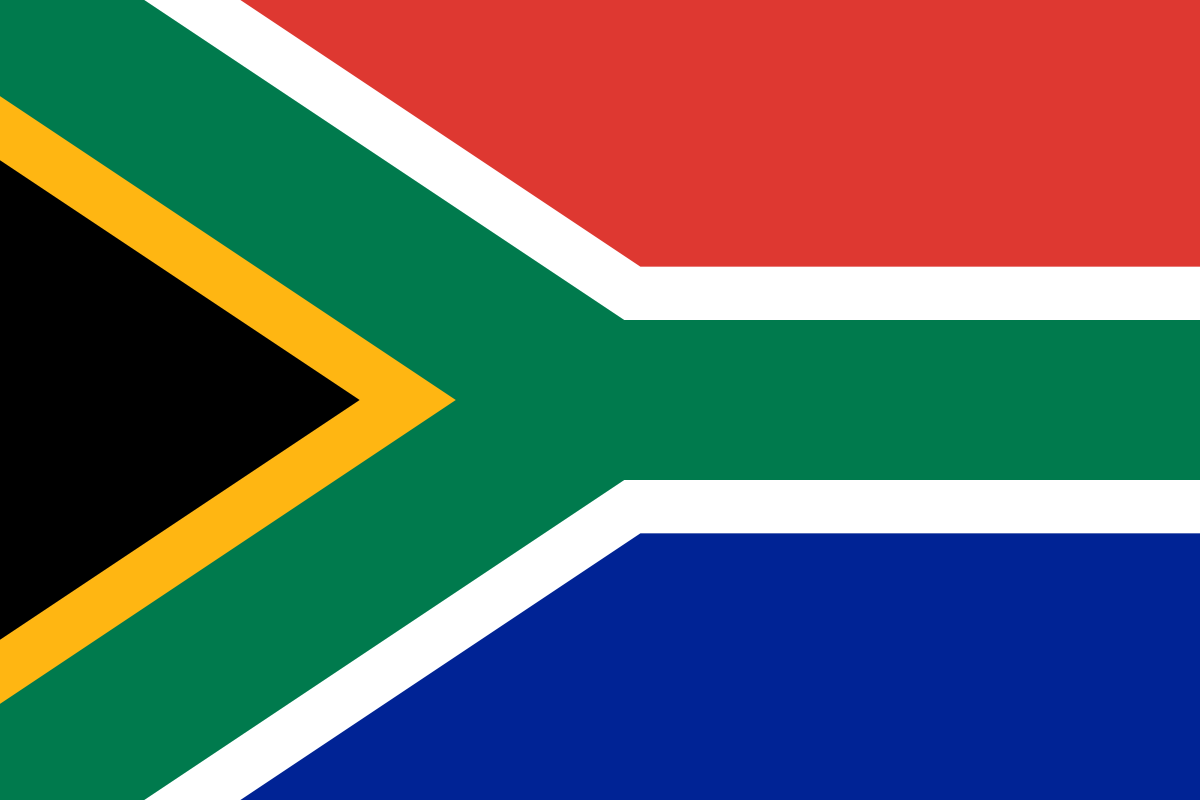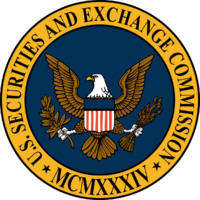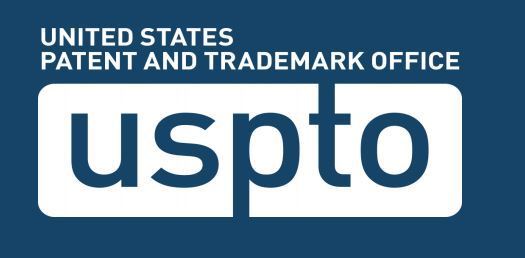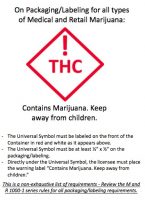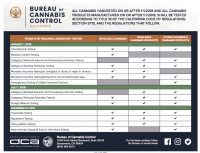The consumer-facing CBD industry operates in a regulatory gray zone even as it grows in prominence. Illegal to market as an unapproved drug, dietary supplement or food additive under the Food, Drug & Cosmetic Act, nevertheless, the CBD industry has flourished with ingestible products widely available. With the increased consumer interest in CBD, headwinds in the form of mislabeled or contaminated products and unsubstantiated therapeutic claims, combined with regulatory uncertainty, continue to be a drag on legitimate market participants and consumer perception of CBD products. The regulation of hemp-derived CBD falls under the purview of the Food and Drug Administration (FDA) and its charge to protect the public health. Despite having jurisdiction to regulate CBD products, the FDA has done little to bring regulatory certainty to the CBD marketplace. However, the FDA, with the assistance of the National Institute of Standards and Technology (NIST), recently took important steps that can be described as “getting their ducks in a row” for the eventual regulation of hemp-derived CBD in consumer products. Always looming is the threat of criminal enforcement of the Controlled Substances Act (CSA) by the Department of Justice’s Drug Enforcement Administration (DEA) for plants and products not meeting the definition of hemp.
Prior to July 2020, the FDA’s regulation of the CBD industry was limited to a public hearing, data collection, an update report to Congress on evaluating the use of CBD in consumer products, and issuing warning letters to those marketing products for treatment of serious diseases and conditions. The FDA recognizes that regulatory uncertainty does not benefit the Agency, the industry or consumers and, therefore, is evaluating a potential lawful pathway for the marketing of CBD products. In furtherance of this effort, the FDA took several recent actions, including:
- Producing a CBD Testing Report to Congress1
- Providing draft guidance on Quality Considerations for Clinical Research2
- Sending a CBD Enforcement Policy to the Office of Management and Budget for pre-release review and guidance3
 Not to be overlooked, the NIST announced a program to help testing laboratories accurately measure compounds, including delta-9 tetrahydrocannabinol (THC) and CBD, in marijuana, hemp and cannabis products, the goal being to increase accuracy in product labeling and to assist labs in identifying THC concentrations in order to differentiate between legal hemp and federally illegal marijuana. These actions appear to be important and necessary steps towards a still be to determined federal regulatory framework for CBD products. Unfortunately, a seemingly innocent interim final rule issued by the DEA on August 21, 2020 (Interim Final Rule), may prove to be devastating to hemp processors and the CBD industry as a whole.4 While the DEA describes its actions as merely conforming DEA regulations with changes to the CSA resulting from the 2018 Farm Bill, those actions may make it exceedingly difficult for hemp to be processed for cannabinoid extraction without violating the CSA in the process.
Not to be overlooked, the NIST announced a program to help testing laboratories accurately measure compounds, including delta-9 tetrahydrocannabinol (THC) and CBD, in marijuana, hemp and cannabis products, the goal being to increase accuracy in product labeling and to assist labs in identifying THC concentrations in order to differentiate between legal hemp and federally illegal marijuana. These actions appear to be important and necessary steps towards a still be to determined federal regulatory framework for CBD products. Unfortunately, a seemingly innocent interim final rule issued by the DEA on August 21, 2020 (Interim Final Rule), may prove to be devastating to hemp processors and the CBD industry as a whole.4 While the DEA describes its actions as merely conforming DEA regulations with changes to the CSA resulting from the 2018 Farm Bill, those actions may make it exceedingly difficult for hemp to be processed for cannabinoid extraction without violating the CSA in the process.
- FDA Report to Congress “Sampling Study of the Current Cannabidiol Marketplace to Determine the Extent That Products are Mislabeled or Adulterated”
On July 8, 2020, the FDA produced a report to the House and Senate Committees on Appropriations detailing the results of a sampling study to determine the extent to which CBD products in the marketplace are mislabeled or adulterated. The study confirmed what the FDA, Congress and the marketplace already knew – that in this regulatory vacuum, there are legitimate concerns about the characteristics of consumer CBD products. These concerns include whether products contain the CBD content as described in the label, whether products contain other cannabinoids (including THC) and whether products were contaminated with heavy metals or pesticides. With these concerns in mind, the FDA tested 147 CBD and hemp products purchased online for the presence of eleven cannabinoids, including determinations of total CBD and total THC, and certain heavy metals. The key tests results included the following:
- 94% contained CBD
- 2 products that listed CBD on the label did not contain CBD
- 18% contained less than 80% of the amount of CBD indicated
- 45% contained within 20% of the amount listed
- 37% contained more than 20% of the amount of CBD indicated
- 49% contained THC or THCA at levels above the lowest concentration that can be detected
- Heavy metals were virtually nonexistent in the samples

Due to the limited sample size, the FDA indicated its intention to conduct a long-term study of randomly selected products across brands, product categories and distribution channels with an emphasis on more commercially popular products. In furtherance of this effort, on August 13, 2020, the FDA published a notice soliciting submissions for a contract to help study CBD by “collecting samples and assessing the quantities of CBD and related cannabinoids, as well as potential associated contaminants such as toxic elements, pesticides, industrial chemicals, processing solvents and microbial contaminants, in foods and cosmetics through surveys of these commodities.”5
Even though this report was not voluntarily produced by the FDA, rather it was required by Congress’ Consolidated Appropriations Act of 2020, it importantly solidified a basis for the need for regulation. With less than half of the products tested falling within the 20% labeling margin of error, this suggests rampant and intentionally inaccurate labeling and/or significant variability in the laboratory testing for cannabinoids.
- NIST Program to Help Laboratories Accurately Measure Compounds in Hemp, Marijuana and Cannabis Products
Proper labeling of cannabinoid content requires reliable and accurate measurement of the compounds found in hemp, marijuana and cannabis products. As part of NIST’s Cannabis Quality Assurance Program, NIST intends to help labs produce consistent measurement results for product testing and to allow forensic labs to distinguish between hemp and marijuana.6 As succinctly stated by a NIST research chemist, “When you walk into a store or dispensary and see a label that says 10% CBD, you want to know that you can trust that number.” Recognizing the lack of standards due to cannabis being a Schedule I drug for decades, NIST intends to produce standardized methods and reference materials the help labs achieve high-quality measurements.
NIST’s efforts to provide labs with the tools needed to accurately measure cannabis compounds will serve as an important building block for future regulation of CBD by the FDA. Achieving nationwide consistency in measurements will make future FDA regulations addressing CBD content in products achievable and meaningful.
- FDA Industry Guidance on Quality Considerations for Clinical Research on Cannabis and Cannabis-Derived Compounds
 On July 21, the FDA released draft guidance to the industry addressing quality considerations for clinical research of cannabis and cannabis-derived compounds related to the development of drugs. These recommendations are limited to the development of human drugs and do not apply to other FDA-regulated products, including food additives and dietary supplements. However, by indicating that cannabis with .3% or less of THC can be used for clinical research and discussing testing methodologies for cannabis botanical raw material, intermediaries and finished drug products, the FDA is potentially signaling to the consumer-facing CBD industry how the industry should be calculating percentage THC throughout the product formulation process.
On July 21, the FDA released draft guidance to the industry addressing quality considerations for clinical research of cannabis and cannabis-derived compounds related to the development of drugs. These recommendations are limited to the development of human drugs and do not apply to other FDA-regulated products, including food additives and dietary supplements. However, by indicating that cannabis with .3% or less of THC can be used for clinical research and discussing testing methodologies for cannabis botanical raw material, intermediaries and finished drug products, the FDA is potentially signaling to the consumer-facing CBD industry how the industry should be calculating percentage THC throughout the product formulation process.
While testing of botanical raw material is guided by the USDA Interim Final Rule on Hemp Production,7 the FDA warns that manufacturing processes may generate intermediaries or accumulated by-products that exceed the .3% THC threshold and may be considered by the DEA to be Schedule I controlled substances. This could be the case even if the raw material and finished product do not exceed .3% THC. The FDA’s guidance may eventually become the standard applied to regulated CBD products in a form other than as a drug. However, through its guidance, the FDA is warning the CBD industry that the DEA may also have a significant and potentially destructive role to play in the manufacturing process for CBD products.
- FDA Submits CBD Enforcement Policy Guidance to the White House
On July 22, 2020, the FDA submitted to the White House Office of Management and Budget a “Cannabidiol Enforcement Policy – Draft Guidance for Industry” for its review. The contents of the document are not known outside of the Executive Branch and there is no guarantee as to when, or even if, it will be released. Nevertheless, given the FDA’s interest in a legal pathway forward for CBD products, the submission is looked upon as a positive step forward. With this guidance, it is important to remember that the FDA’s primary concern is the safety of the consuming public and it continues to collect data on the effects of ingestible CBD on the human body.
It is doubtful that this guidance will place CBD products in the dietary supplement category given the legal constraints on the FDA and the lack of safety data available to the FDA. The guidance likely does not draw distinctions among products using CBD isolate (as found in Epidiolex), full or broad spectrum hemp extract, despite the FDA’s expressed interest in the differences between these compositions.8 Instead, the FDA is more likely to establish guardrails for CBD ingestible products without authorizing their marketing. These could include encouragement of Good Manufacturing Practices, accuracy in labeling, elimination of heavy metal and pesticide contamination, and more vigorous enforcement against marketing involving the making of disease claims. The FDA is not expected to prescribe dosage standards, but may suggest a maximum daily intake of CBD for individuals along the lines of the U.K.’s Food Standards Agency guideline of a maximum of 70 mg of CBD per day.9
Identifying concerns in the current marketplace; promoting accuracy in testing; highlighting the line between FDA regulation and DEA enforcement; and proposing guidance to the industry all appear to be signs of substantial progress on forging a regulatory path for ingestible CBD products.
- The DEA’s Interim Final Rule Addressing Derivatives and Extracts Could Have a Devastating Impact on the Cannabinoid Industry
The seemingly benign Interim Final Rule published by the DEA in August with the stated intent of aligning DEA regulations with the changes to the CSA caused by the 2018 Farm Bill’s definition of hemp could cut the legs out from under the hemp-derived CBD industry.10 Claiming it has “no discretion with respect to these amendments,” the DEA rule states that “a cannabis derivative, extract, or product that exceeds the 0.3% delta-9 THC limit is a schedule I controlled substance, even if the plant from which it was derived contained 0.3% or less delta-9 THC on a dry weight basis.”11 Under this interpretation of the 2018 Farm Bill language and the CSA, it is unclear whether processors of hemp for cannabinoid extraction would be in possession of a controlled substance if, at any time, a derivative or extract contains more than 0.3% delta-9 THC even though the derivative or extract may be in that state temporarily and/or eventually falls below the 0.3% threshold when included in the final product. It would not be unusual for extracts created in the extraction process to exceed 0.3% delta-9 THC in the course of processing cannabinoids from hemp.
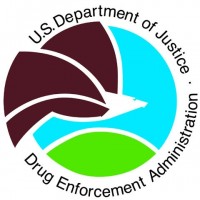 The implications of the rule may have a chilling effect on those involved in, or providing services to, hemp processors. It is known, as revealed by the Secretary of the USDA to Congress, that the DEA does not look favorably on the legalization of hemp and development of the hemp industry. The DEA’s position is that the rule merely incorporates amendments to the CSA caused by the 2018 Farm Bill’s definition of hemp into DEA’s regulations. In doing so, the DEA made explicit its interpretation of the Farm Bill’s hemp provisions that it presumably has held since the language became operative. What is not known is whether this changes the DEA’s appetite for enforcing the law under its stated interpretation, which to date it has refrained from doing. Nevertheless, the industry is likely to respond in two ways. First, by submitting comments to the Interim Final Rule, which will be accepted for a 60-day period, beginning on August 21, 2020. Anyone concerned about the implications of this rule should submit comments by the deadline. Second, by the filing of a legal challenge to the rulemaking on grounds that the rule does not correctly reflect Congressional intent in legalizing hemp and, consequently, the rulemaking process violated the Administrative Procedure Act. If both fail to mitigate harm caused to the CBD industry, the industry will have to look to Congress for relief. In the meantime, if the hemp processing industry is disrupted by this rule, cannabis processors holding licenses in legal states may be looked upon to meet the supply needs of the CBD product manufacturers.
The implications of the rule may have a chilling effect on those involved in, or providing services to, hemp processors. It is known, as revealed by the Secretary of the USDA to Congress, that the DEA does not look favorably on the legalization of hemp and development of the hemp industry. The DEA’s position is that the rule merely incorporates amendments to the CSA caused by the 2018 Farm Bill’s definition of hemp into DEA’s regulations. In doing so, the DEA made explicit its interpretation of the Farm Bill’s hemp provisions that it presumably has held since the language became operative. What is not known is whether this changes the DEA’s appetite for enforcing the law under its stated interpretation, which to date it has refrained from doing. Nevertheless, the industry is likely to respond in two ways. First, by submitting comments to the Interim Final Rule, which will be accepted for a 60-day period, beginning on August 21, 2020. Anyone concerned about the implications of this rule should submit comments by the deadline. Second, by the filing of a legal challenge to the rulemaking on grounds that the rule does not correctly reflect Congressional intent in legalizing hemp and, consequently, the rulemaking process violated the Administrative Procedure Act. If both fail to mitigate harm caused to the CBD industry, the industry will have to look to Congress for relief. In the meantime, if the hemp processing industry is disrupted by this rule, cannabis processors holding licenses in legal states may be looked upon to meet the supply needs of the CBD product manufacturers.
The Interim Final Rule also addresses synthetically derived tetrahydrocannabinols, finding them to be Schedule I controlled substances regardless of the delta-9 THC content. This part of the rule could impact the growing market for products containing delta-8 THC. While naturally occurring in hemp in small quantities, delta-8 THC is typically produced by chemically converting CBD, thereby likely making the resulting delta-8 THC to be considered synthetically derived.
The hemp-derived cannabinoid industry continues to suffer from a “one step forward, two steps back” syndrome. The USDA’s highly anticipated Interim Final Rule on hemp production (released Oct. 31, 2019) immediately caused consternation in the CBD industry, and continues to, due to certain restrictive provisions in the rule. Disapproval in the rule is evident by the number of states deciding to operate under their pilot programs for the 2020 growing season, rather than under the conditions of the Interim Final Rule.12 With signs of real progress by the FDA on regulating the CBD products industry, yet another interim final rule could undercut the all-important processing portion of the cannabinoid supply chain by injecting the threat of criminality where there is no intent by processors to violate the law. It is not a stretch to suggest that both the USDA and FDA are being significantly influenced by the DEA. The DEA’s Interim Final Rule is just another troubling example of the legal-illegal dichotomy of cannabis that continues to plague the CBD industry.
References
- U.S. Food & Drug Admin., Report to the U.S. House Committee on Appropriations and the U.S. Senate Committee on Appropriations, Sampling Study of the Current Cannabidiol Marketplace to Determine the Extent That Products are Mislabeled or Adulterated (July 2020).
- U.S. Food & Drug Admin., Cannabis and Cannabis-Derived Compounds Quality Considerations for Clinical Research: Guidance for Industry(July 2020).
- U.S. Food & Drug Admin., Cannabidiol Enforcement Policy: Draft Guidance for Industry (July 2020).
- Implementation of the Agriculture Improvement Act of 2018, 85 FR 51639 (Aug. 21, 2020) (to be codified at 21 C.F.R. §§ 1308, 1312).
- U.S. Food & Drug Admin., Collection and Analysis of Products Containing CBD and Cannabinoids, Notice ID RFQ_75F40120R00020 (Aug. 13, 2020).
- Nat’l Inst. of Standards and Tech., NIST to Help Labs Achieve Accurate THC, CBD Measurements (July 21, 2020).
- Agricultural Improvement Act of 2018, Pub. L. 115-334, title X, 10113 (codified at 7 U.S.C. §§ 1639o-1639s).
- U.S. Food & Drug Admin., Report to the U.S. House Committee on Appropriations and the U.S. Senate Committee on Appropriations, Cannabidiol (CBD), p. 14 (March 2020).
- U.K. Food Standards Agency, Food Standards Agency Sets Deadline for the CBD Industry and Provides Safety Advice to Consumers (Feb. 2020) at https://www.food.gov.uk/news-alerts/news/food-standards-agency-sets-deadline-for-the-cbd-industry-and-provides-safety-advice-to-consumers.
- See supra n. 4.
- Id.
- U.S. Dept. of Agriculture, Status of State and Tribal Hemp Production Plans for USDA Approval (as of Aug. 26, 2020).



